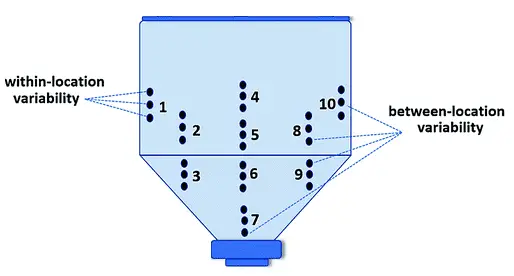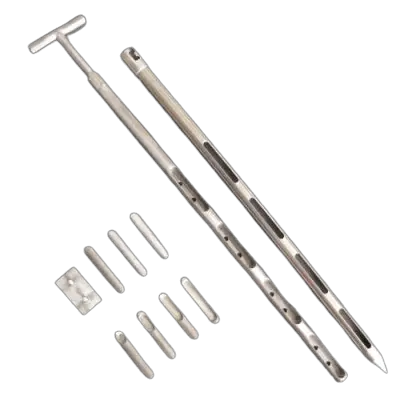Blend uniformity refers to the homogeneity of a mixture of two or more substances.

The United States Pharmacopeia (USP) defines blend uniformity as the degree to which the API and other components of a drug product are distributed uniformly throughout the blend. This can be assessed by analyzing samples taken from different locations within the blend and comparing their API content.
The blend uniformity is a critical quality attribute that ensures
– Each dosage unit of a drug product contains the same amount of API,
– to prevent the formation of hotspots (where the API is present in a higher concentration) and cold spots (where the API is present in a lower concentration) Hot spots and cold spots can both lead to inconsistent drug efficacy and safety issues.
To ensure blend uniformity, pharmaceutical manufacturers use a variety of techniques, including
–mixing equipment that promotes even distribution of components,
–sampling and testing procedures,
–statistical process control.
The FDA also requires pharmaceutical manufacturers to perform a test or examination on each commercial batch of all products to monitor the output and validate the performance of processes that could be responsible for causing variability, which includes adequacy of mixing to ensure uniformity and homogeneity” under current Good Manufacturing Practices (cGMP), 21 CFR 211.110 (a) (3)
Sampling procedure for Blend Uniformity (BU)
Appropriate blend sampling techniques and procedures should be developed for each product with consideration to various designs of blend powder sampling and the physical and chemical properties of the blend components. Collect at least 3 replicate samples from each location
Quantity of the sample tested should be equivalent to the dosage used. If a common blend is used for the manufacture of multiple strengths of the drug product then the weight of the sample used should be equivalent to the weight of the lowest strength.
Blend samples should be handled and weigh carefully because segregation may occur during weighing and transformation
Sample size
Define the effects of sample size (e.g., 1-10X dosage unit range) while developing a technique capable of measuring the true uniformity of the blend. Sample quantities larger than 3X can be used with adequate scientific justification.
Blend Uniformity Sample location
Carefully identify at least 10 sampling locations in the blender to represent potential areas of poor blending. Collect at least 3 replicate samples from each location
Sampling location should be selected according to the difficulty of the blending.
Areas of poor blending must be covered in sampling. Corners and discharge point must have sampling locations. Blender geometry should be taken into consideration during the sampling of the blender.
Following are the sampling locations for octagonal blender.
- Left-Top
- Back-Top
- Back-Middle
- Center-Top
- Center-Middle Top
- Center-Bottom
- Discharge-Port
- Front-Top
- Front-Bottom
- Right-Top

Sampling thief with removable dies
Blend uniformity sampling shall be performed using SS Sampling thief with removable dies from deep containers of solids like blender.

A sampling thief generally consists of two concentric tubes; removable dies shall be placed in the inner tube in which the sample is collected. The outer tube is hollow with openings that can be aligned with the removable dies in the inner tube. If required blank dies shall be inserted into locations where samples are not required. A well-designed thief will have a sharp end to minimize disruption to the powder bed thereby reducing sampling error.
Some thieves have a locking device that allows the sample volume to be set to the required sample weight, thereby reducing the weight variation in the sample population.
The material from which the thief is constructed, e.g. stainless steel or polypropylene, may also have an effect on sampling error due to static effects.
Sampling error can also be affected by bed depth, as the static pressure of the bulk blend forces the material into the sample chamber(s). This pressure is far greater at the bottom of a large container than it is in the middle or at the top. It is quite possible that the same thief could extract samples of different particle sizes from the top or bottom of a static powder blend.
Blend uniformity samples should be taken directly from the blender just before unloading the blend. If it is not possible to perform sampling from blender then the sample may be taken from the container after unloading. Three samples should be taken from each sampling location in glass vials and submitted to QC for Analysis

The Acceptance criteria for Blend Uniformity (BU)
The Acceptance criteria of Blend Uniformity Analysis is as follows:
• RSD (relative standard deviation) of all individual results ≤ 5 %
• All individual results are within 10 % of the mean of the results (90% to 110% of label claim).